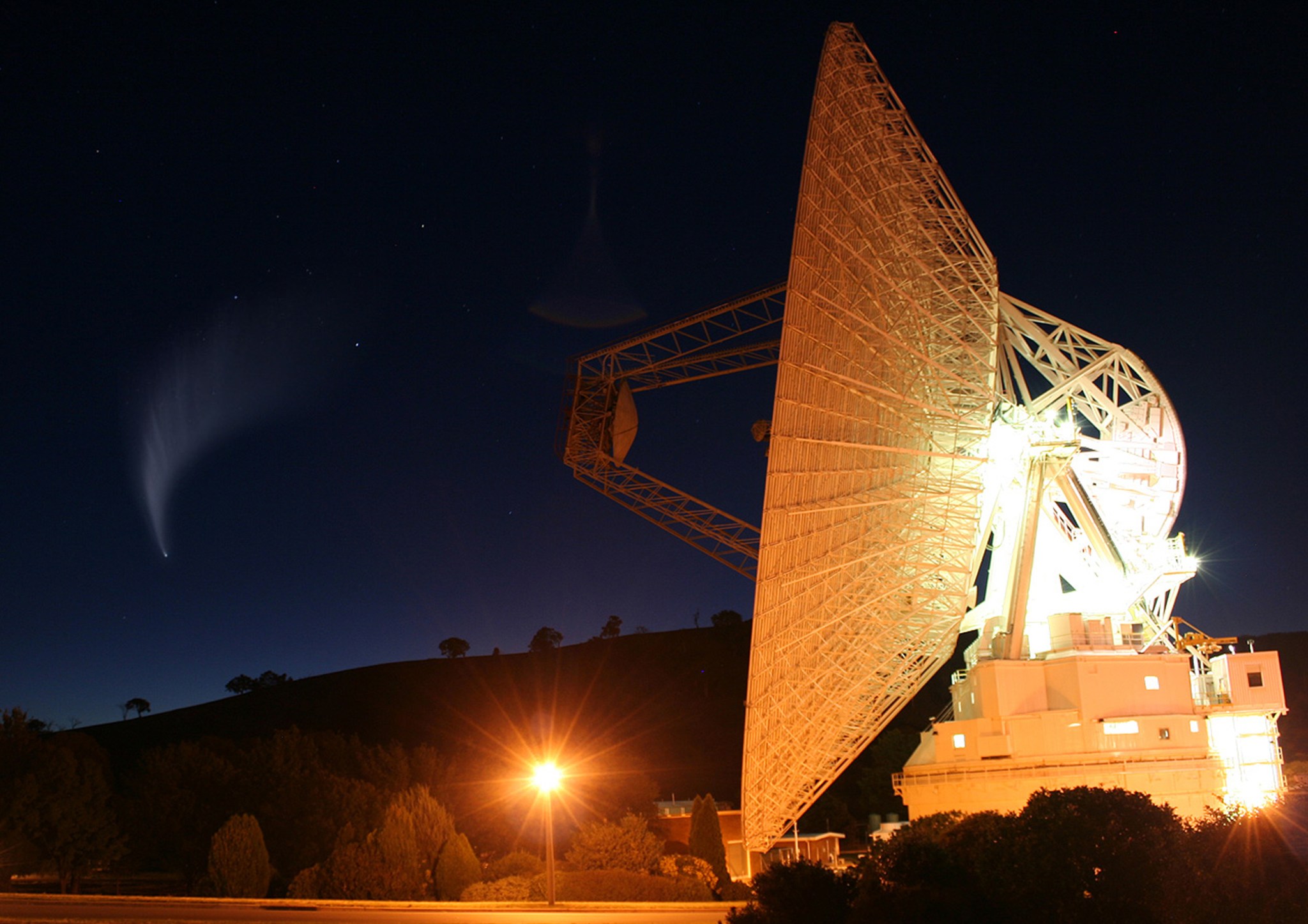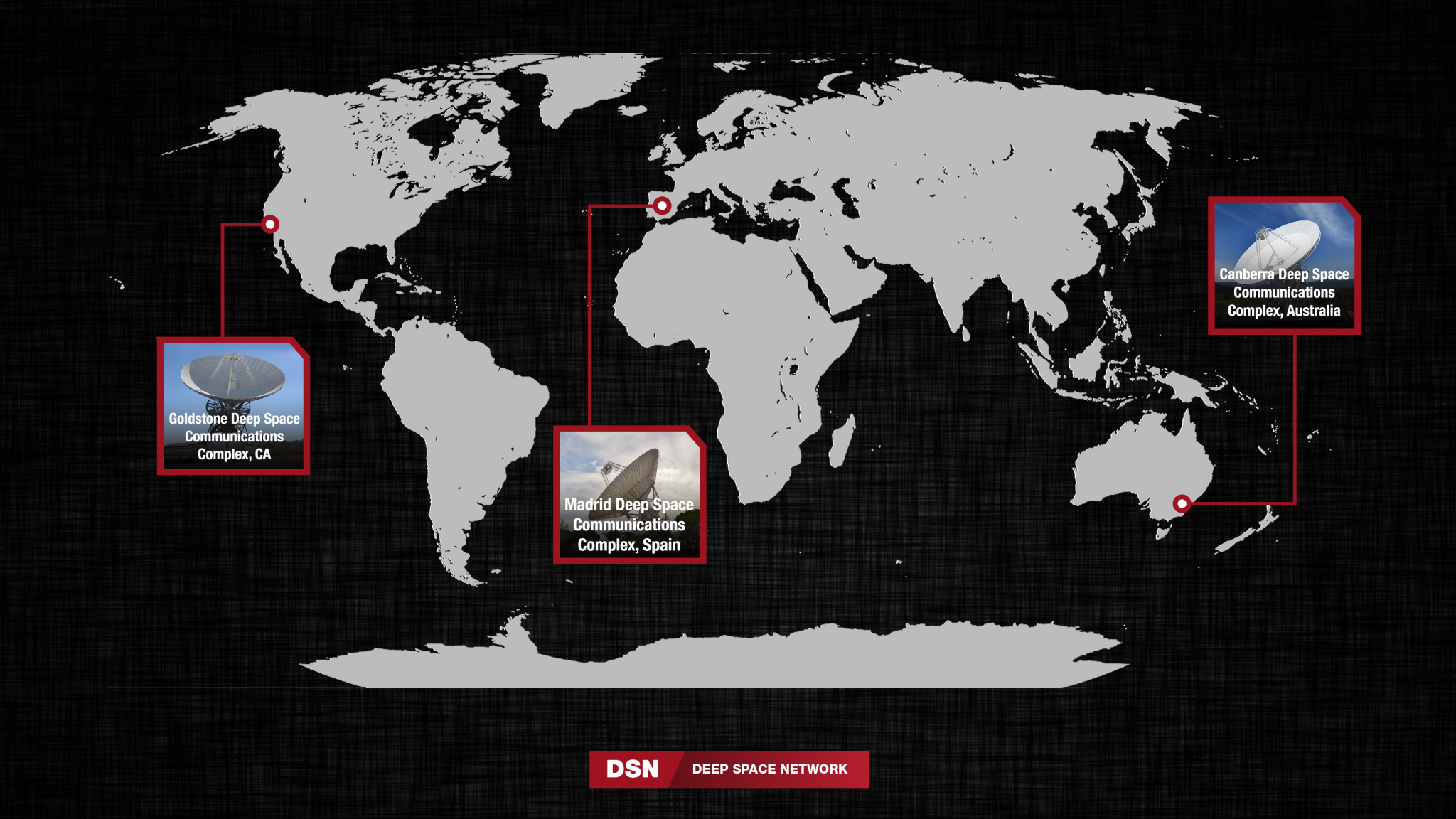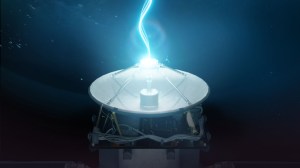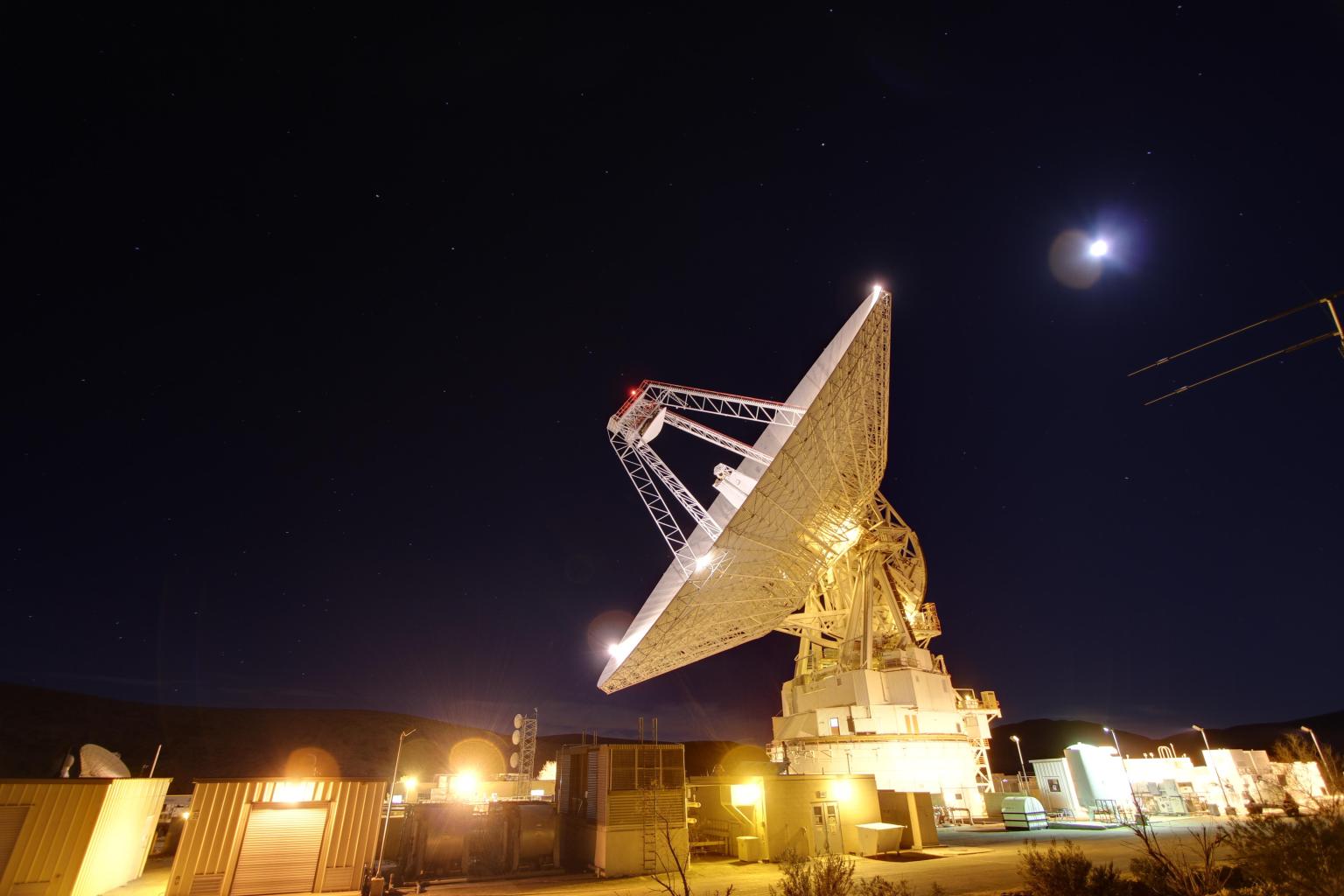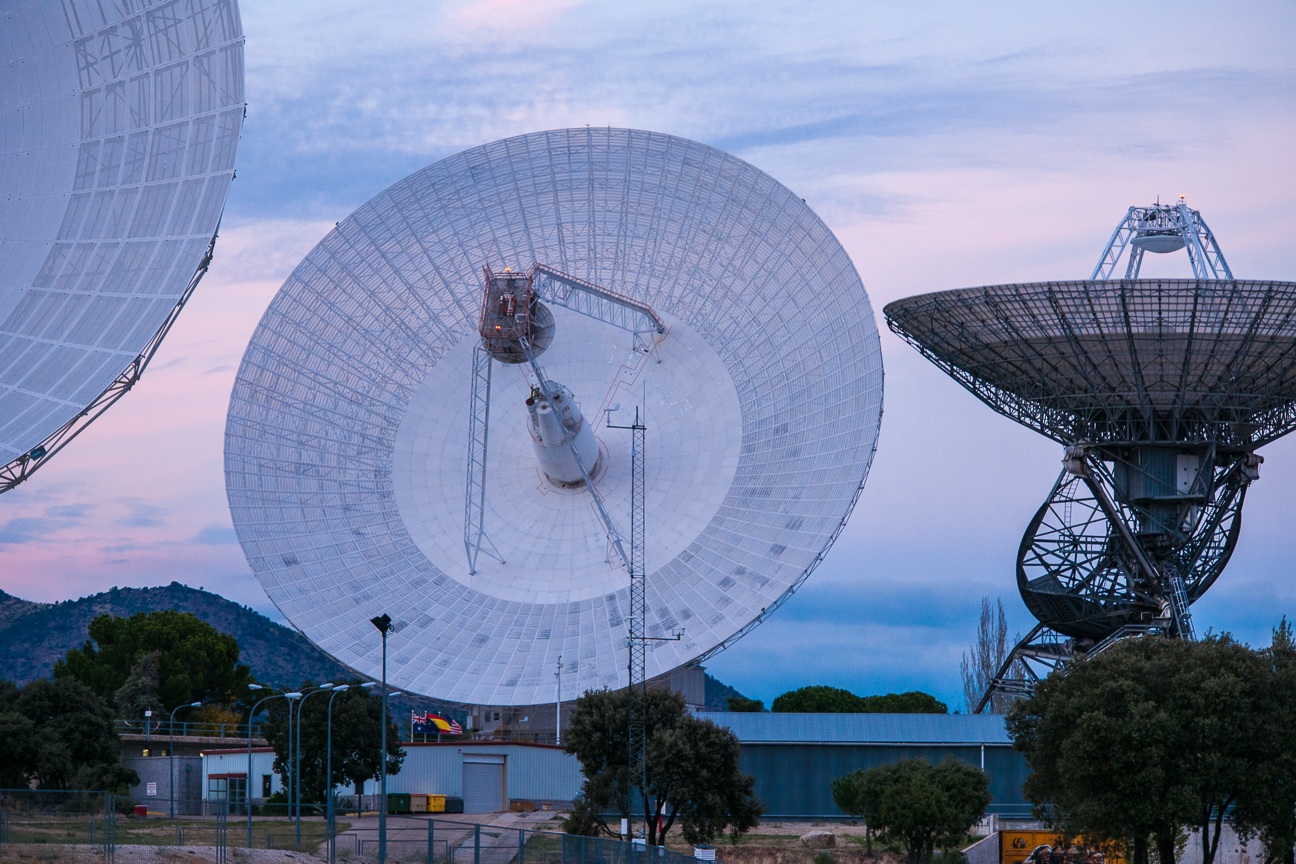Each of the three Deep Space Network, or DSN, sites has multiple large antennas and is designed to enable continuous radio communication between several spacecraft and Earth. All three complexes consist of at least four antenna stations, each equipped with large, parabolic dish antennas and ultra-sensitive receiving systems capable of detecting incredibly faint radio signals from distant spacecraft.
The DSN’s large antennas are focusing mechanisms that concentrate power when receiving data and when transmitting commands. The antennas must point very accurately towards the spacecraft, because an antenna can “see” only a tiny portion of the sky – not unlike looking at the sky through a soda straw.
To hear the spacecraft’s faint signal, the antennas are equipped with amplifiers, but there are two problems. First, the signal becomes degraded by background radio noise, or static, emitted naturally by nearly all objects in the universe, including the sun and earth. The background noise gets amplified along with the signal. Second, the powerful electronic equipment amplifying the signal adds noise of its own. The DSN uses highly sophisticated technology, including cooling the amplifiers to a few degrees above absolute zero, and special techniques to encode signals so the receiving system can distinguish the signal from the unwanted noise.
Antenna stations are remotely operated from a signal processing center at each complex. The centers house electronic systems that point and control the antennas, receive and process data, transmit commands and generate spacecraft navigation data.
Once the data is processed at the complexes, it is transmitted to NASA’s Jet Propulsion Laboratory for further processing and distribution to science teams over a ground communications network.
DSN Locations
The Australian complex is located 40 kilometers (25 miles) southwest of Canberra near the Tidbinbilla Nature Reserve. The Spanish complex is located 60 kilometers (37 miles) west of Madrid at Robledo de Chavela. The Goldstone complex is located on the U.S. Army’s Fort Irwin Military Reservation, approximately 72 kilometers (45 miles) northeast of the desert city of Barstow, California. Each complex is situated in semi-mountainous, bowl-shaped terrains to shield against external radio frequency interference.
Interested in Visiting?
All three Deep Space Network complexes are open to visitors, but policies on reservations and group tours vary. Please visit the websites for the individual complexes for detailed visitor info and directions. Learn more about visiting SCaN sponsored programs here.
Goldstone, California
The Goldstone Deep Space Communication Complex is located on the Fort Irwin Military Base, near Barstow, California.
The Goldstone website posts information about their visitor center.
Follow Goldstone on Facebook for more information.
Madrid, Spain
The Madrid Deep Space Communications Complex is located in Robledo de Chavela, Spain.
The Complex is located at Carretera de Colmenar del Arroyo a Robledo de Chavela M-531 Km.7 Robledo de Chavela Madrid 28294 España.
For information on group tours and school groups, contact the Visitor Center staff at +34-91 867 73 21 or visit the website.
Follow Madrid on Facebook for more information.
Canberra, Australia
The Canberra Deep Space Communication Complex is located adjacent to the Tidbinbilla Nature Reserve, 35 km southwest of Canberra. The drive takes approximately 45 minutes.
For visitor information, call +61 02 6201 7880, or visit the website.
Follow Canberra on Facebook and X for more information.
Contact
Media contact:
NASA’s Jet Propulsion Laboratory
818-354-5011
Education and Public Outreach contact:
NASA’s Jet Propulsion Laboratory




























